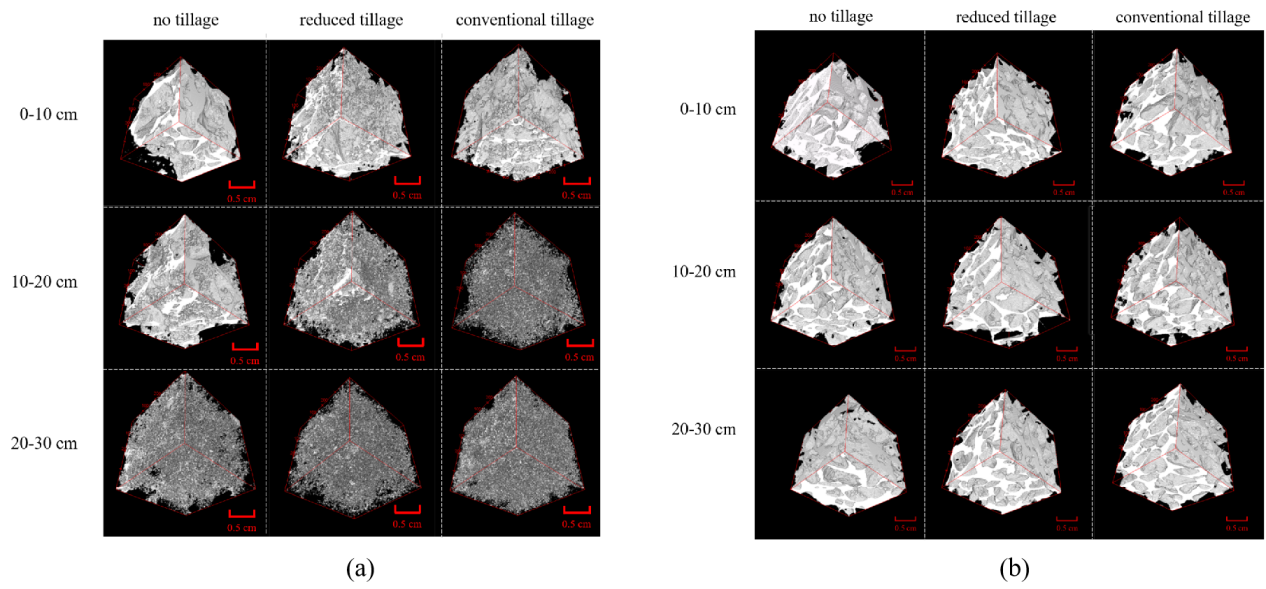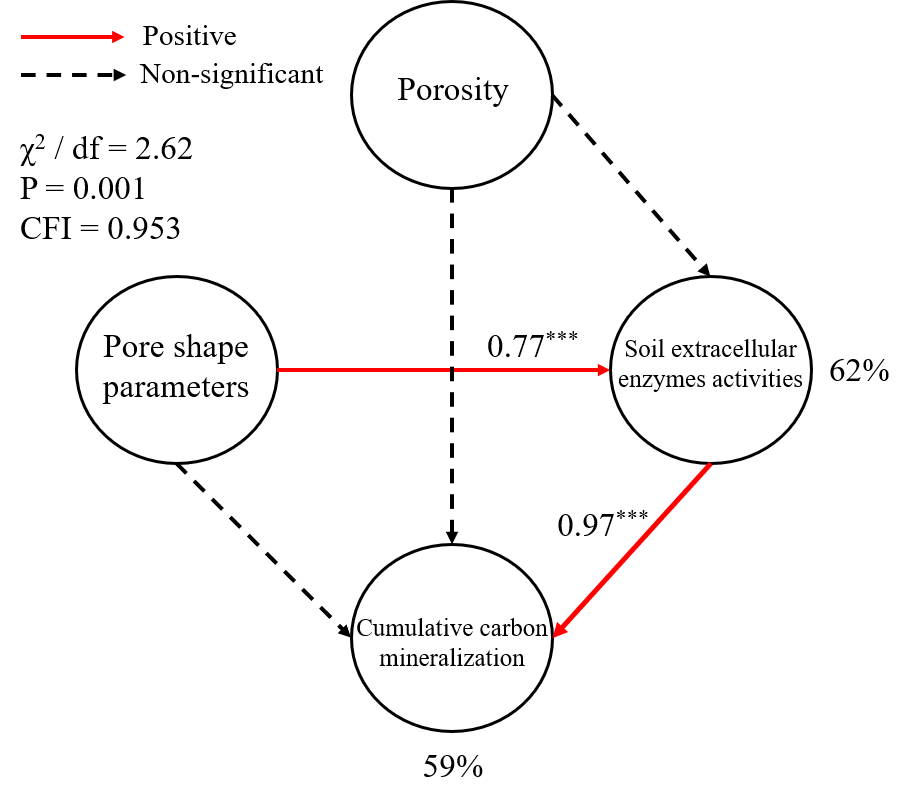Soil aggregates are the basic units of soil structure and serve as a reservoir for soil carbon, playing a crucial role in the carbon cycle of ecosystems. The pore characteristics of soil aggregates influence the mineralization of soil organic carbon. However, research on the mechanisms of soil organic carbon sequestration at the aggregate level in Mollisols is limited.
Recently, a research team led by Prof. LIU Xiaobing and Prof. Zhang Xingyi from the Key Laboratory of Black Soils Conservation and Utilization, Northeast Institute of Geography and Agroecology, Chinese Academy of Science (CAS) revealed that pore connectivity and anisotropy affect carbon mineralization via extracellular enzymes in > 2 mm aggregates under conservation tillage of Mollisols.
This work was published in Soil and Tillage Research on Aug. 6.
This study is based on a long-term location experiment of conservation tillage established at Hailun Station in 2004, selecting three treatments for research: conventional tillage, reduced tillage, and no tillage. Industrial nanoscale computed tomography technology was used to measure the soil pore size distribution, shape parameters, extracellular enzyme activities, and carbon mineralization of situ soil columns and > 2 mm aggregates-filled soil columns .
The results showed that long-term no tillage and reduced tillage increased the total porosity and proportion of larger pores, but significantly decreased the proportion of smaller pores in situ soil columns. Conventional tillage exhibited the most complex pores because of the highest pore fractal dimension (2.75–2.90), anisotropy (0.366–0.516), and the lowest sphericity (5.1–28.7) (Figure 1a). As for the soil columns filled with > 2 mm aggregates, reduced tillage significantly increased the pore connectivity by 3.02–3.62 %, whereas no tillage had no effect (Figure 1b).
Furthermore, the structural equation modelling indicated that in soil columns filled with > 2 mm aggregates, pore shape parameters, particularly connectivity and anisotropy, positively influenced the activities of β-glucosidase and β-xylosidase directly, and positively affected soil carbon mineralization by influencing extracellular enzymes activity indirectly (Figure 2).
The findings emphasize the importance of pore shape parameters effect on soil carbon sequestration, and will be helpful in comprehending the microscopic mechanisms of soil carbon sequestration in > 2 mm aggregates.

Figure 1. Visualization of pore in situ soil columns (a) and > 2 mm aggregates-filled soil columns (b). The scanned soil column is in the red box of the figure, each red frame line has a side length of 2 cm. The white in the red box is the soil pore, and the transparent in the red box is the solid part of the soil.

Figure 2. The Structural Equation Model (SEM) of pore distribution and shape parameters effect on cumulative organic carbon mineralization through direct and indirect pathways. The numerical values on the arrows representing the path coefficients of standardized effects. Red arrows indicate a positive relationship. Significant paths are denoted as follows: *, p < 0.05; **, p < 0.01; ***, p < 0.001, black dashed lines represent non-significant paths. R2 values represent the degree to which the independent variable explains the variation of the dependent variable.
Contact:
Meng Zhou
Northeast Institute of Geography and Agroecology, Chinese Academy of Sciences
E-mail: zhoumeng@iga.ac.cn
Reference:
Xiao Y, Zhou M*, Liu X, Zhang X, Xiao L, Liu J, Cruse R. Pore connectivity and anisotropy affect carbon mineralization via extracellular enzymes in > 2 mm aggregates under conservation tillage of Mollisols. Soil & Tillage Research. 2024, 244: 106253.
https://doi.org/10.1016/j.still.2024.106253.

